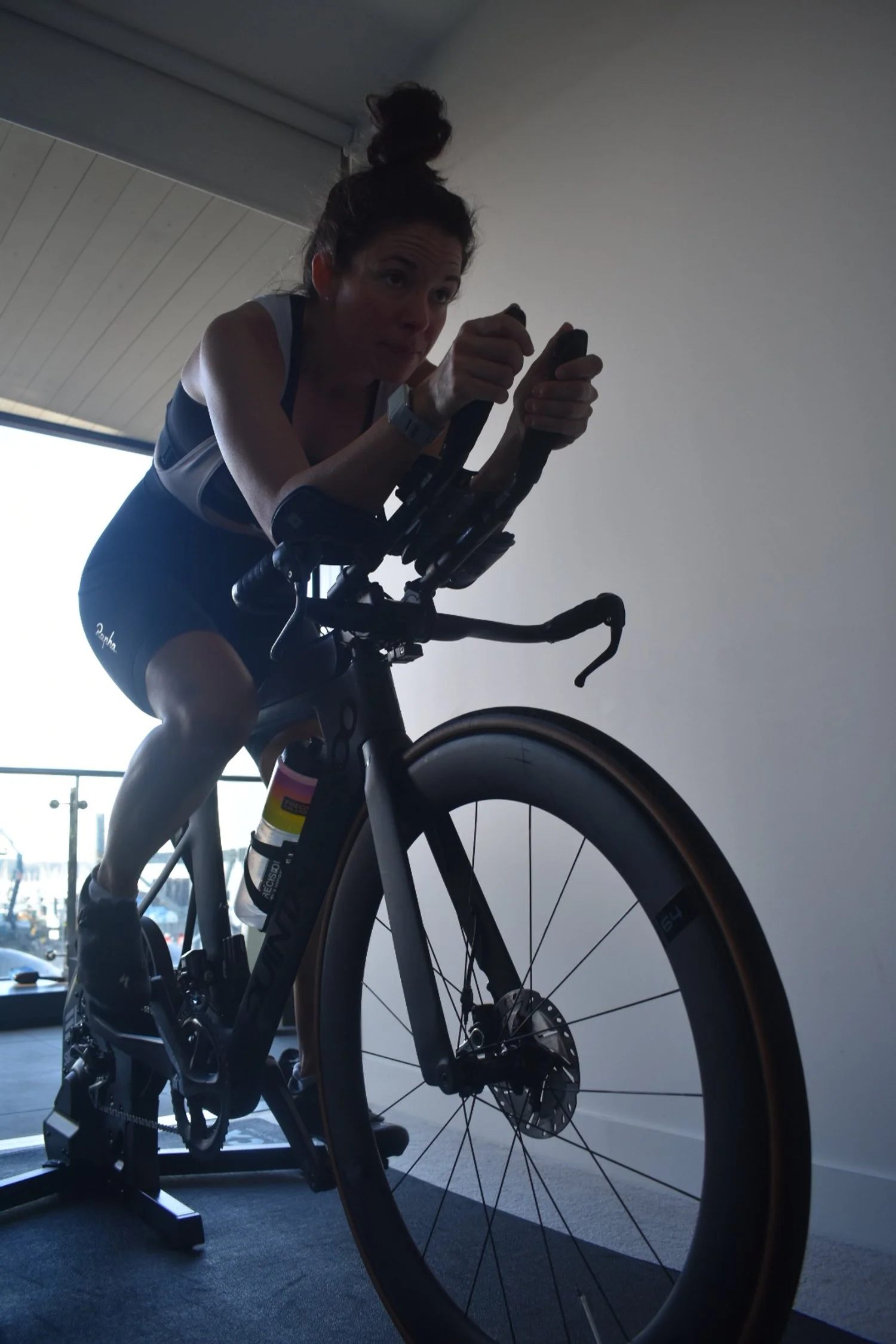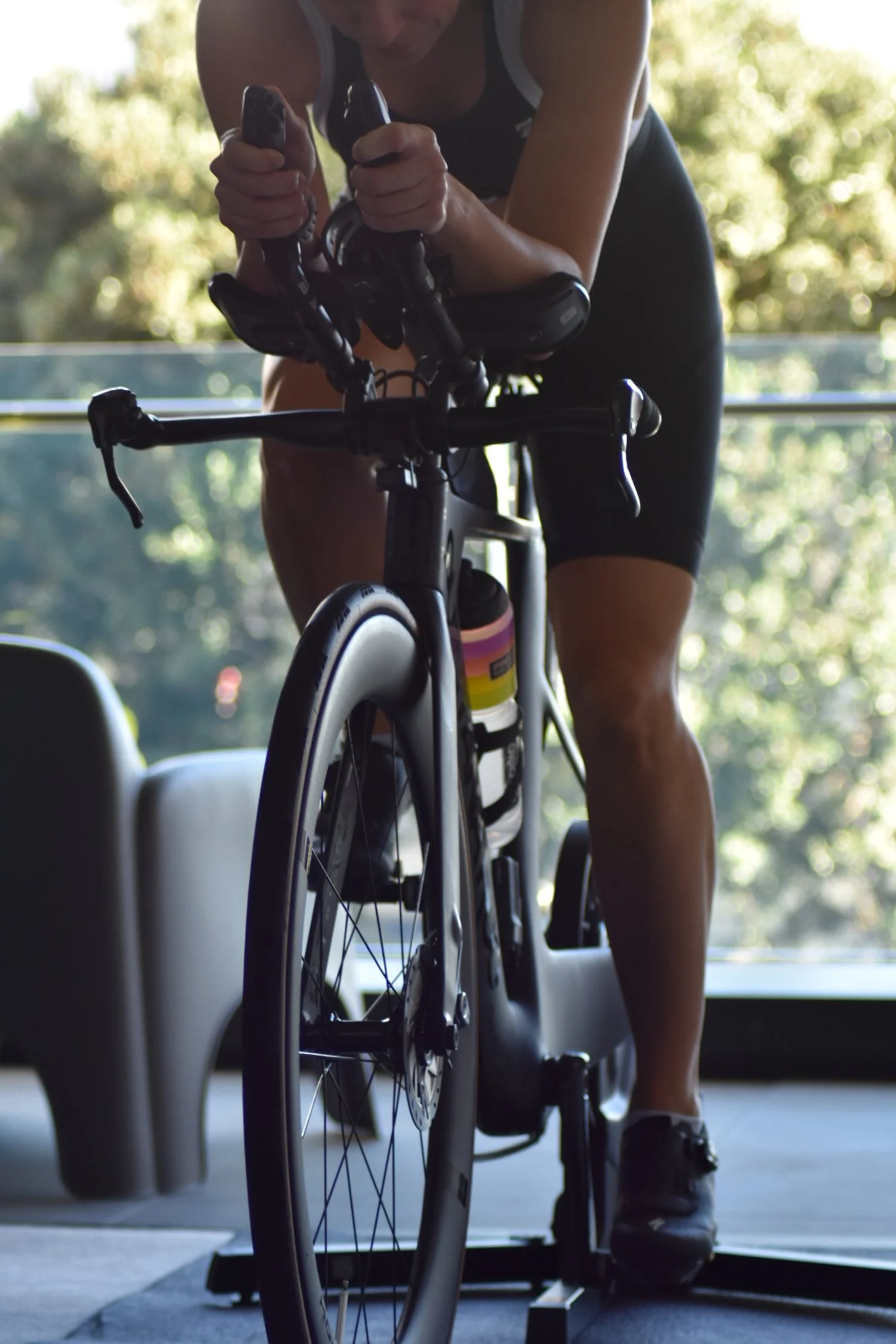Everything You Need to Get Started With Indoor Riding
Indoor cycling has become a game-changer for triathletes. Whether you’re short on time, avoiding poor weather, or aiming for more focused training, riding indoors offers efficiency, control, and consistency that’s hard to beat.
But to get the most out of your indoor rides, there are a few things you’ll want to know from setup and equipment to training benefits and mental strategies.
Here’s your complete guide to indoor cycling as a triathlete:
Why Ride Indoors?
Indoor riding isn’t just for winter. Here’s why many triathletes make it a core part of their training year-round:
Time-efficient: No traffic, lights, or coasting.
Controlled environment: Perfect for targeted intervals and power-based sessions.
Safer: No cars, no bad weather, no mechanical surprises or flat tires mid-ride.
Highly measurable: With a power meter or smart trainer, every session is quantifiable.
What You Need to Ride Indoors
Trainer Types:
Smart Trainer (Direct Drive or Wheel-On): Measures power and adjusts resistance based on your workout or virtual terrain.
Basic Trainer (Fluid or Magnetic): More affordable, but without the automatic resistance control.
Smart Bike (e.g. Wahoo Kickr Bike, Peloton): High-end indoor bikes with built-in tech, ideal if you have the budget and don’t want to mount your outdoor bike.
Other Essentials:
Fan (or two!): Indoor riding gets hot. Good airflow makes a massive difference in comfort and performance.
Towel: To keep sweat off your bike and floor.
Mat: Reduces noise and protects your floor from sweat and bike grime.
Bike Computer / App: For displaying metrics and running workouts.
Hydration + Nutrition: You’ll sweat more indoors so treat it like any hard outdoor session.
Location: Consider setting up your bike + trainer next to a window you can open or in air conditioned room.
Software & Apps
Indoor riding gets fun (and addictive) with the right app:
Zwift: Virtual cycling world with races, group rides, and structured workouts.
TrainerRoad: Focused on science-backed training plans and interval sessions.
Wahoo SYSTM: Structured plans and mental training for endurance athletes.
Rouvy / FulGaz: Real-world video routes for scenic virtual rides.
Choose one that fits your goals, training style, and budget. Riding to a software/app isn’t actually necessary, you can use your GPS watch or bike computer to follow workouts as long as it’s paired to your trainer/power meter.
Training Indoors vs Outdoors
What’s Different:
No rest from coasting or downhills, indoor riding is constant.
More sweat loss, even easy rides can feel hotter.
More mentally demanding, no changing scenery or wind in your face.
The Benefits:
Precision: Nail your intervals without interruption.
Controlled conditions: Ideal for threshold, VO2 max, and cadence-focused work.
Better time use: A 60-minute indoor session can be as effective as 90 minutes outside.
Tips for Success
Structure matters: Go in with a plan. Avoid mindless spinning unless it’s an active recovery day.
Use power or RPE: Indoor conditions make heart rate less reliable so guide your efforts with power or perceived exertion.
Simulate race scenarios: Practice steady-state intervals in aero, simulate terrain or pacing strategies.
Enter races or group rides: Online platforms like Zwift make hard sessions more engaging and competitive.
Mindset & Motivation
Indoor training can feel repetitive. Try these strategies:
Break it up: Use intervals or micro-goals to chunk the ride.
Entertainment: Music, podcasts, or even Netflix during easy rides. It’s a great opportunity to catch-up on TV shows.
Track your progress: Watching fitness metrics improve keeps motivation high.
Celebrate your consistency: Indoor riding is a sign of commitment, especially when others bail due to weather or time constraints.
How Often Should Triathletes Ride Indoors?
It depends on your season and schedule. Many triathletes mix indoor rides with outdoor long rides:
Off-season/Base: Mostly indoors, 2 to 4 sessions/week.
Race prep: Indoor for intervals, outdoor for longer endurance or brick rides.
Final Thoughts
Indoor cycling is one of the best tools in a triathlete’s training arsenal. When used intentionally, it can accelerate your fitness, sharpen your mental strength, and keep you consistent no matter the weather, time of day, or location.
Whether you’re squeezing in early-morning intervals before work or building FTP during the off-season, remember: every pedal stroke indoors is a deposit in your race-day fitness bank.

